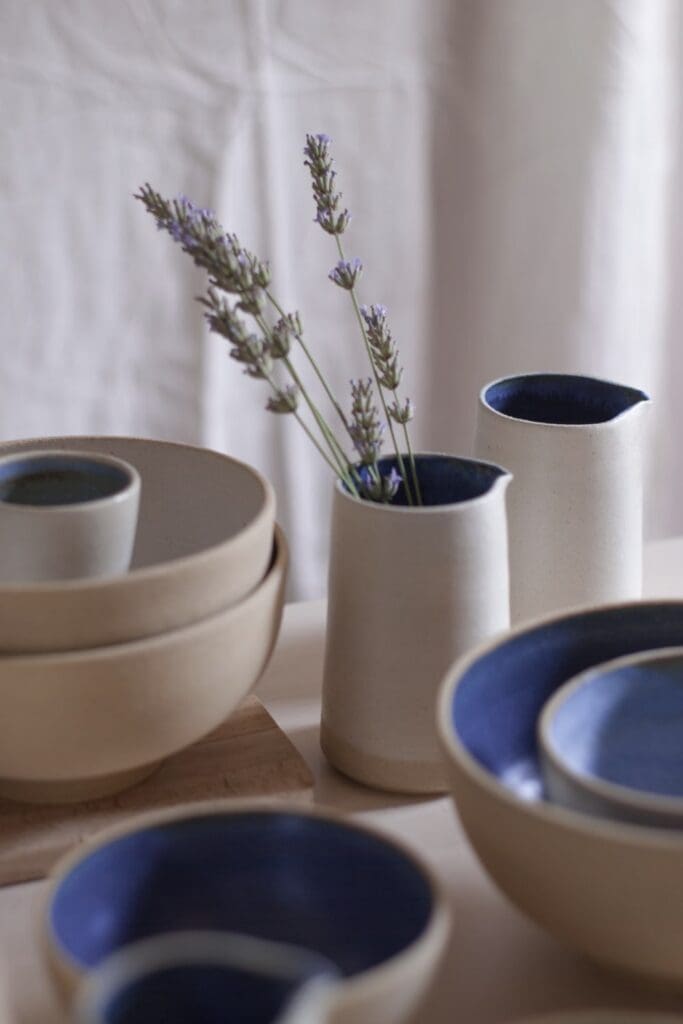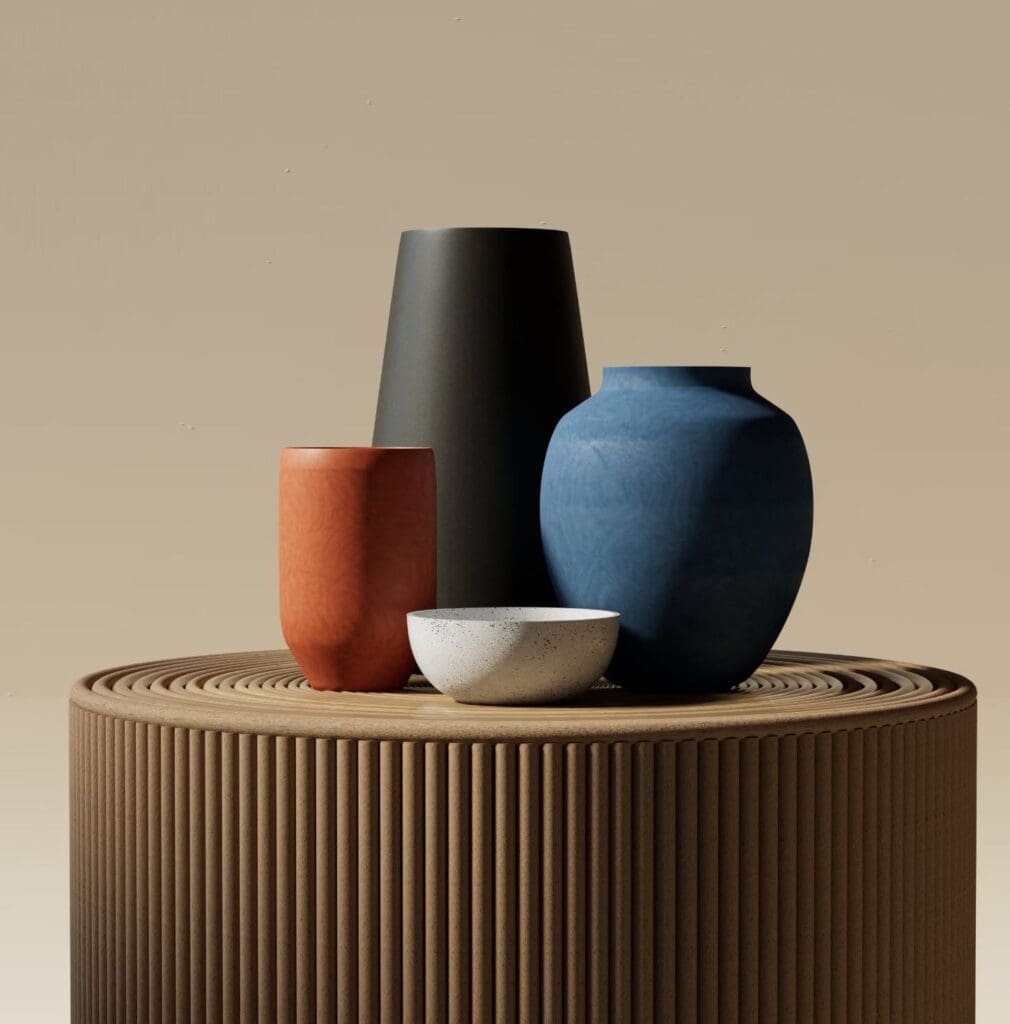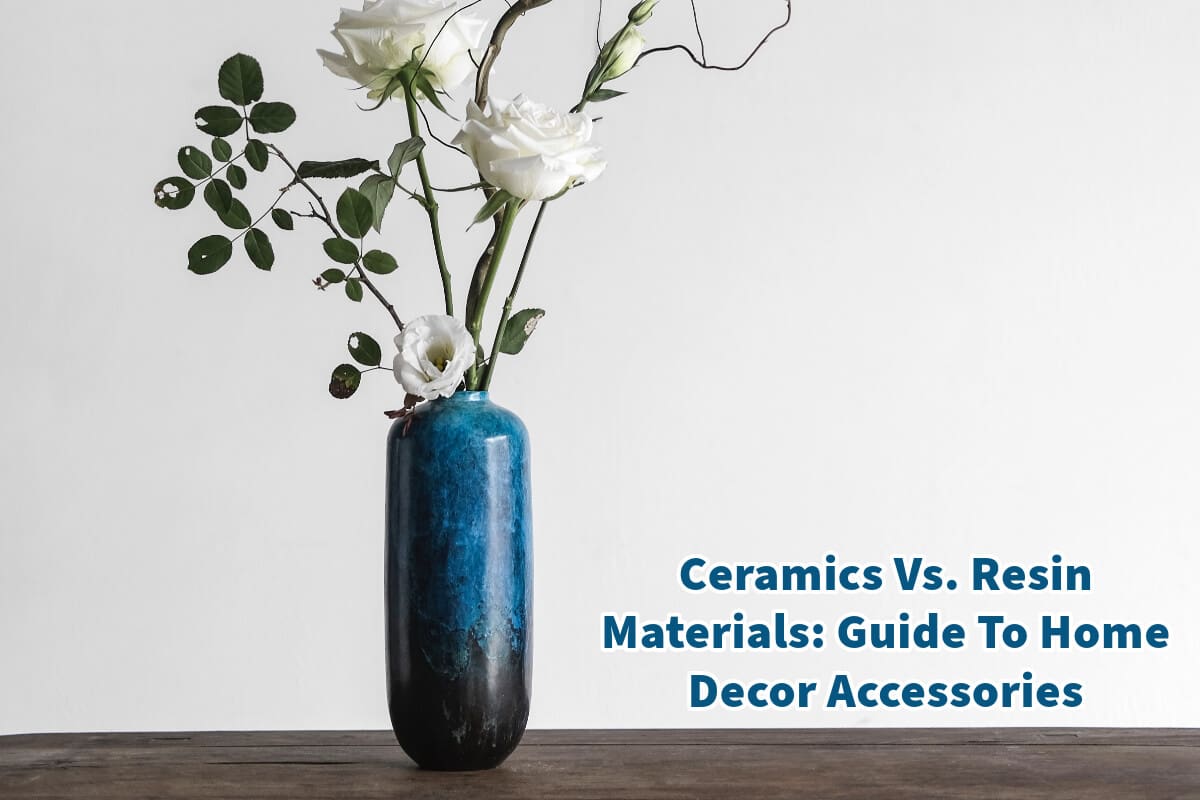When exploring options for home decor and furnishings, you may find yourself at a crossroads between two primary materials: ceramics and resin.
While both are excellent choices, each offers distinct characteristics and advantages that make them suitable for particular types of products. Understanding these differences can help you make a more informed decision for your home enhancement projects.
Table of Contents
- Ceramic Vs. Resin: The Ultimate Guide For Home Décor Accessories
- Ceramics: An Overview
- Resin: An Overview
- Which To Choose: Ceramic Or Resin?
- Considerations For Specific Home Décor Items
- Sustainability Concerns
- Maintenance And Longevity Of Ceramic Vs. Resin
- Related Content
Ceramic Vs. Resin: The Ultimate Guide For Home Décor Accessories
When choosing materials for home décor accessories, the options are seemingly endless. Among the many choices, ceramic and resin stand out as popular contenders.
Both materials offer unique advantages and disadvantages, making them suitable for different types of décor. Read on as we explore the properties, pros, and cons of ceramics and resins to help you make a more informed decision for your home.
Ceramics: An Overview
What Is Ceramic?
Ceramic is a versatile material commonly made from clay, water, and sand. Creating a ceramic item involves molding the mixture into a shape, which is left to dry naturally or baked in a kiln.
Ceramic is often glazed with a protective layer and painted to enhance the object’s aesthetics and durability.

Properties Of Ceramic
Here are some of the significant properties of ceramics and why they are essential.
Durability:
Ceramics, mainly when glazed, are pretty sturdy and can withstand moderate impacts.
Aesthetics:
The availability of various glazes and paints makes it easy to produce ceramic items in various colors and finishes.
Water-Resistance:
A glazed ceramic item does not absorb water easily, making it ideal for kitchenware or bathroom accessories.
Heat Resistance:
Ceramics are generally challenging to burn and commonly used in cookware.

Advantages Of Ceramic Home Décor
- Traditional Appeal: Ceramic items often carry a classic, timeless look that adds an element of tradition to your home.
- Variety: Ceramics can be molded into countless shapes and designs, offering various choices.
- Easy Maintenance: Cleaning ceramics is typically straightforward—wipe down with a damp cloth.
- Environmentally Friendly: Made from natural materials like clay, ceramics are generally eco-friendly.
Disadvantages Of Ceramic Home Décor
- Weight: Ceramic items are relatively heavy, making them less suitable for hanging décor.
- Fragility: Despite their sturdiness, ceramics can crack or break upon hard impact.
- Cost: Quality ceramic pieces can be expensive, especially hand-painted or artisanal.
Resin: An Overview
What Is Resin?
Resin is a semi-solid or viscous substance derived from organic compounds. Depending on its origin, it can be natural (plant-based) or synthetic. Resin can be molded into myriad shapes and hardened into a durable plastic-like material.
Properties Of Resin
Flexibility:
Resins are more flexible than ceramics, allowing for intricate designs and shapes.
Durability:
While not as hard as ceramic, the resin is durable and less likely to break upon impact.
Weight:
Resin is generally lighter than ceramic, making it more suitable for hanging decorations.
Versatility:
The material can be colored, frosted, or even made transparent.
Advantages Of Resin In Home Décor
- Modern Aesthetics: Resin items often have a contemporary look, fitting seamlessly into modern interiors.
- Intricate Designs: The flexibility of resin allows for more intricate details in sculptures or accessories.
- Cost-Effective: Resin items are often more affordable than their ceramic counterparts.
- Easy to Repair: Unlike ceramics, resin items are easier to repair if they suffer minor damage.
Disadvantages Of Resin In Home Décor
- Chemical Sensitivity: Being a chemical compound, the resin may release fumes or toxins, especially when new.
- Not Eco-Friendly: Synthetic resins are not biodegradable, making them less eco-friendly than ceramics.
- Less Traditional: Resin may not be the best fit if you’re going for a classic or antique look.
Which To Choose: Ceramic Or Resin?
The choice between ceramic and resin ultimately depends on your specific needs and style preferences.
- For a Classic Look: If you aim for a traditional or vintage aesthetic, ceramics are the way to go.
- For Modern Interiors: Resin items fit perfectly in modern settings and allow for a broader range of intricate designs.
- On a Budget: If cost is a concern, resin offers a more affordable range of options.
- Eco-Conscious: For those looking to make an eco-friendly choice, ceramics are generally more biodegradable and made from natural materials.
- For Durability: While both materials are durable, ceramics have an edge, mainly glazed ones.
Whether you opt for the timeless appeal of ceramic or the modern allure of resin, each material brings its unique characteristics to the table. Knowing their respective properties, advantages, and disadvantages will help you choose the right home décor accessories that elevate your space’s style and stand the test of time.

Considerations For Specific Home Décor Items
Now that you understand both materials’ general properties, advantages, and disadvantages, let’s delve into how to choose between ceramic and resin for specific types of home décor.
Vases
- Ceramic: Offers a classic look, and its weight gives it stability. Ideal for larger arrangements that require a solid base.
- Resin: Lighter and less fragile, suitable for smaller table arrangements or hanging planters.
Tableware
- Ceramic: Often used in tableware for its durability and heat resistance. It can be safely used in microwaves and dishwashers.
- Resin: Generally not suitable for hot food or drinks, as it may not be heat-resistant. It is better for decorative tableware rather than functional items.
Wall Art
- Ceramic: Heavy and best suited for larger wall installations where durability and a traditional aesthetic are desired.
- Resin: Lighter, easier to hang, and better for intricate and modern designs.
Sculptures And Figurines
- Ceramic: Ideal for larger, more robust pieces on a shelf or floor. It’s more likely to break if knocked over.
- Resin: Suitable for more miniature, intricate sculptures, especially those with fine details. Less likely to break upon impact.
Candle Holders
- Ceramic: Fire-resistant and stable, making them safe for use as candle holders.
- Resin: Ensure the resin is flame-resistant if you use it as a candle holder, as not all resins tolerate heat well.
Outdoor Decor
- Ceramic: Weather-resistant if properly glazed, but can crack in freezing conditions. Heavy, so less likely to be knocked over by the wind.
- Resin: More weather-resistant and lightweight. It can be easily moved indoors during extreme weather conditions.
Sustainability Concerns
For those conscious about their choices’ environmental impact, ceramics are usually the better option. They are often made from naturally occurring materials like clay and sand and can be recycled or composted in certain conditions.
Resins, especially synthetic varieties, are primarily chemical-based and not biodegradable.
Maintenance And Longevity Of Ceramic Vs. Resin
Both ceramic and resin items require minimal maintenance. Ceramics can generally be cleaned with a simple wipe-down, while resins may require a specific type of cleaner, depending on the finish.
When it comes to longevity, ceramics tend to last longer, mainly if they are glazed. Resin items, while durable, may not have the same lifespan, particularly if they are frequently exposed to harsh weather conditions or direct sunlight, which can cause them to fade or become brittle.
Choosing between ceramic and resin for your home décor accessories depends on your preferences, needs, and specific applications. Ceramic offers a timeless, traditional aesthetic, durability, and eco-friendliness but comes with a higher price tag and weight.
Resin offers flexibility in design, a modern appeal, and affordability but may lack environmental sustainability and long-term durability.
Whether you’re looking for a statement piece to complete your living room or a unique vase for fresh flowers, taking the time to consider the material can make all the difference. Both ceramic and resin have their merits, and understanding these can help you make an informed decision that you’ll be happy with for years to come.
We would love to talk to you if you want to see how we can help you with any of your ceramic production.
Find out more about how Mondoro can help you create, develop, and manufacture excellent home decor and furniture products – don’t hesitate to contact me, Anita. Check out my email by clicking here, or become a part of our community and join our newsletter by clicking here.
Mondoro gives out a FREE Lookbook to anyone interested. You can receive a copy of our latest Lookbook by clicking here.
Listen to our Podcast called Global Trade Gal. You can find it on all major podcast platforms. Try out to listen to one of our podcasts by clicking here.
Subscribe to our Mondoro Company Limited YouTube Channel filled with great videos and information by clicking here.
Related Content
How Does The Firing Temperature Affect Ceramics Production?
If a ceramic piece is not fired at the correct temperature, it will make a huge difference in the final product’s outcome. It is also important that the correct kiln is used for the production process. This is because many things must be considered when using a kiln to fire ceramics. During the firing process, many things can cause the final product to fail or crack.
You can learn more by reading our blog, How Does The Firing Temperature Affect Ceramics Production?, by clicking here.
Ceramics Raw Material From Traditional To Advanced
The fascinating world of ceramics is built upon a rich tapestry of raw materials that have evolved from simple, naturally occurring substances to complex, engineered compounds. These raw materials serve as the foundational elements from which an astounding array of traditional and advanced ceramics are crafted.
You can read our blog on Ceramics Raw Material From Traditional To Advanced by clicking here.
Can You Glaze Pottery Without A Kiln?
To start manufacturing or making pottery, you may want to know if you can glaze or fire pottery without a kiln.
Glazed pottery, stoneware, ceramics, and porcelain must be fired at high temperatures. You need to have a kiln to fire them at these high temperatures. There are several kilns, but the main kilns are electrical kilns, fuel-burning kilns, and gas kilns.
You can learn more by reading our blog, Can You Glaze Pottery Without A Kiln? by clicking here.

